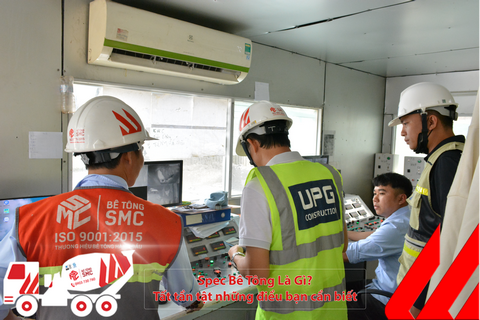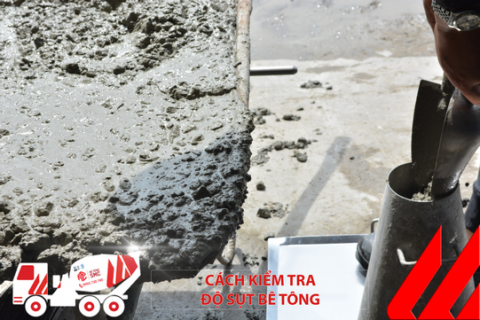Frequently asked Questions
Concrete engineering advice
Business contact
Using Sea Sand as a Replacement for River Sand in Construction
Under the pressure to accelerate the progress of national key projects as well as various large and small construction projects, the demand for sand supply has become increasingly urgent. Many studies in Vietnam have proposed the use of sea sand in construction and roadbed projects. Initial results show that this material meets most technical standards, opening up a potential solution to replace river sand, helping to solve the problem of scarce construction material resources.
Construction sand is divided into two main types: sand for concrete and mortar in construction, and sand for filling to support infrastructure and transportation projects.
Construction sand used for concrete and mortar requires higher quality, typically with coarse grains, and must meet technical standards as regulated by Vietnam, such as TCVN 7570:2006 (aggregates for concrete and mortar) and TCVN 9205:2012 (crushed sand for concrete and mortar).
Fill sand for infrastructure projects, especially road construction, is typically used in large quantities with less stringent quality requirements, usually with finer grains. However, environmental regulations must still be controlled to minimize negative impacts.
According to Assoc. Prof. Dr. Le Trung Thanh, in many government meetings, the Prime Minister and Deputy Prime Ministers have shown particular concern and directed the Ministry of Transport (MOT), Ministry of Natural Resources and Environment (MONRE), Ministry of Agriculture and Rural Development (MARD), along with other ministries, industries, and localities to implement the policy of using sea sand to replace river sand, particularly in key transportation projects. The Prime Minister has tasked the Ministry of Transport with proposing the expansion of pilot projects using sea sand to compensate for the shortage of river sand, as well as implementing specific solutions and guidelines for localities, investors, and contractors in the application of sea sand as filling material.
Using sea sand in construction, concrete production, infrastructure filling, and roadbed projects is a promising solution. To help localities implement this effectively, the Ministry of Construction has compiled and the Ministry of Science and Technology (MOST) has issued several important standards such as:
-
TCVN 7570:2006 – Aggregates for concrete and mortar,
-
TCVN 10796:2015 – Fine sand for concrete and mortar,
-
TCVN 13574:2023 – Saline sand for concrete and mortar.
These standards provide clear, transparent guidelines for using sea sand in construction projects, making it easier to apply in both civil and industrial works nationwide.
From a technical perspective, sea sand has a high specific gravity, similar to river sand, and can be used for roadbed filling. The Ministry of Transport has also issued document number 2499/BGTVT-KHCN&MT on March 11, 2024, announcing the results of pilot projects using sea sand for roadbed construction and guiding provincial and municipal authorities on applying this material. This is an important step to ensure a sustainable supply of construction materials and meet future infrastructure development needs.
Despite its potential applications, sea sand poses some challenges due to the significant amount of chloride salts in its composition. The use of sea sand could lead to the leaching of chlorides into the surrounding environment, affecting soil quality, groundwater, and surface water.
The impacts of chloride salts include:
-
The risk of corrosion to steel structures, including reinforcement in concrete, affecting the durability of the structures.
-
Negative impacts on soil quality in the areas where it is used.
Therefore, to ensure effective use of sea sand for roadbed filling, clear regulations are needed regarding the allowable level of salinity for agricultural land, crops, aquaculture areas, and related ecosystems. Furthermore, the extraction, processing, and transportation of sea sand should undergo thorough environmental impact assessments to minimize negative effects on marine ecosystems, ensuring sustainable development.
Other news
Currently, ready-mix concrete is a top choice for many construction projects—both large and small—thanks to its convenience, consistent quality, and high construction efficiency. With extensive experience supplying commercial concrete for numerous key projects in the Southern region, SMC proudly offers a diverse range of ready-mix concrete products to meet the technical requirements of every type of construction.
A Comprehensive Guide to Concrete Specs – Everything You Need to Know
A Complete Guide to Concrete Specs – a set of technical parameters including concrete grade, slump, compressive strength, aggregate size, and mix ratio. This article helps you understand how to define, apply, and control concrete quality according to TCVN standards and practical construction conditions.
How to check the concrete slump
In construction and civil engineering, concrete slump test (or simple slump test) is the work performed at the construction site or in the laboratory that usually determines and measures the hardness, consistency of samples. Concrete before pouring concrete or casting maintenance, research or experiment samples.




